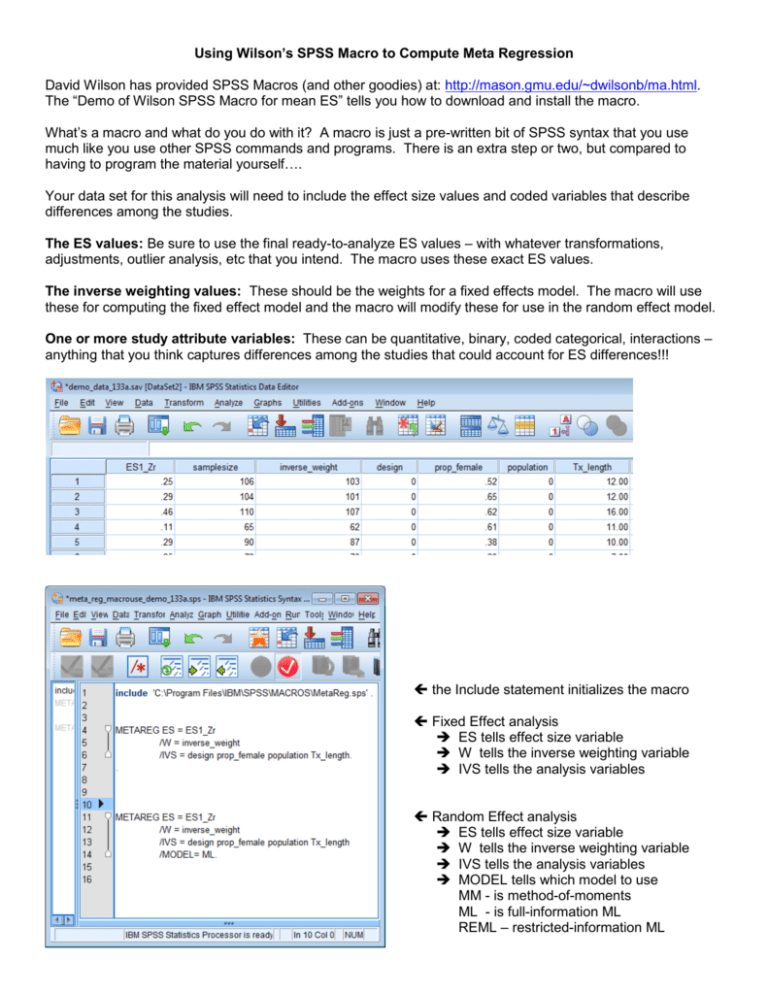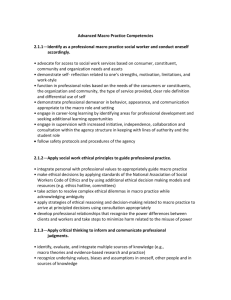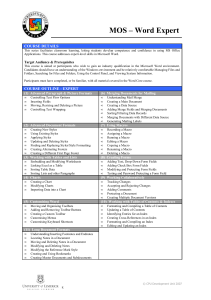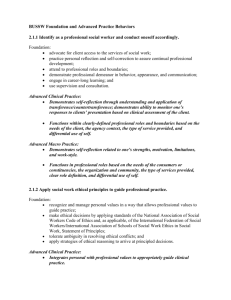Demo of Wilson SPSS Macro for MetaRegression
advertisement

Using Wilson’s SPSS Macro to Compute Meta Regression David Wilson has provided SPSS Macros (and other goodies) at: http://mason.gmu.edu/~dwilsonb/ma.html. The “Demo of Wilson SPSS Macro for mean ES” tells you how to download and install the macro. What’s a macro and what do you do with it? A macro is just a pre-written bit of SPSS syntax that you use much like you use other SPSS commands and programs. There is an extra step or two, but compared to having to program the material yourself…. Your data set for this analysis will need to include the effect size values and coded variables that describe differences among the studies. The ES values: Be sure to use the final ready-to-analyze ES values – with whatever transformations, adjustments, outlier analysis, etc that you intend. The macro uses these exact ES values. The inverse weighting values: These should be the weights for a fixed effects model. The macro will use these for computing the fixed effect model and the macro will modify these for use in the random effect model. One or more study attribute variables: These can be quantitative, binary, coded categorical, interactions – anything that you think captures differences among the studies that could account for ES differences!!! the Include statement initializes the macro Fixed Effect analysis ES tells effect size variable W tells the inverse weighting variable IVS tells the analysis variables Random Effect analysis ES tells effect size variable W tells the inverse weighting variable IVS tells the analysis variables MODEL tells which model to use MM - is method-of-moments ML - is full-information ML REML – restricted-information ML Fixed Effect Model results overall mean effect size & NHST Significant Model - indicates ES is related to variables Significant within-groups variance would indicate there may be more . variables related to ES ES larger for design=1 than design=0 ES larger for fewer females in sample 2 populations have same effect size ES larger for longer effects … after controlling for other variables in . the meta analytic model. Random Effect Model results overall mean effect size & NHST Significant Model - indicates ES is related to variables Significant within-groups variance would indicate there may be more . variables related to ES ES larger for design=1 than design=0 ES larger for fewer females in sample 2 populations have same effect size ES larger for longer effects … after controlling for other variables in . the meta analytic model. estimate of the systematic variation . . . across studies Most sources recommend completing and presenting both the Fixed and Random effect models. Be sure you know which approaches/interpretations are “standard” for your research area & audience!











